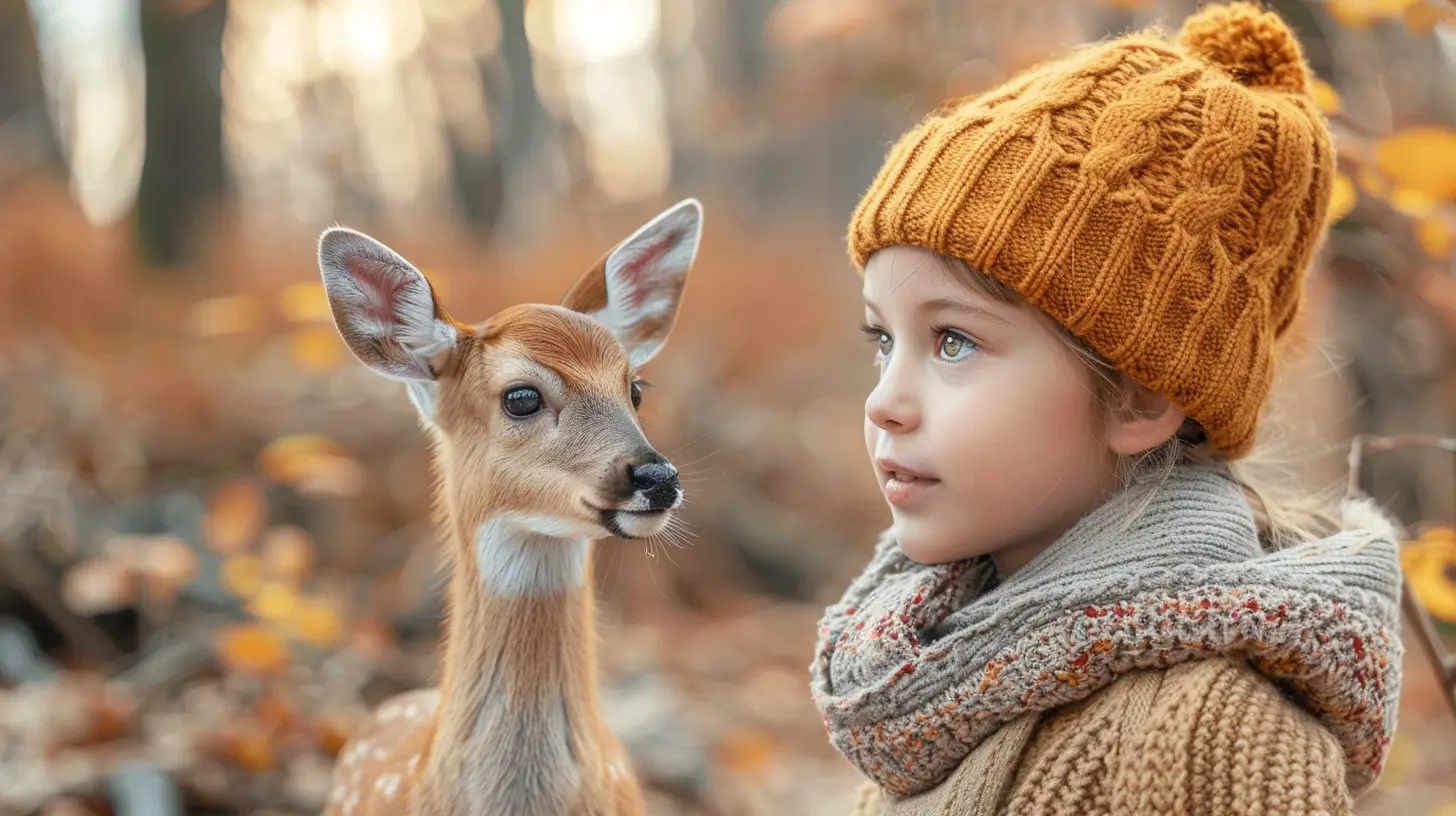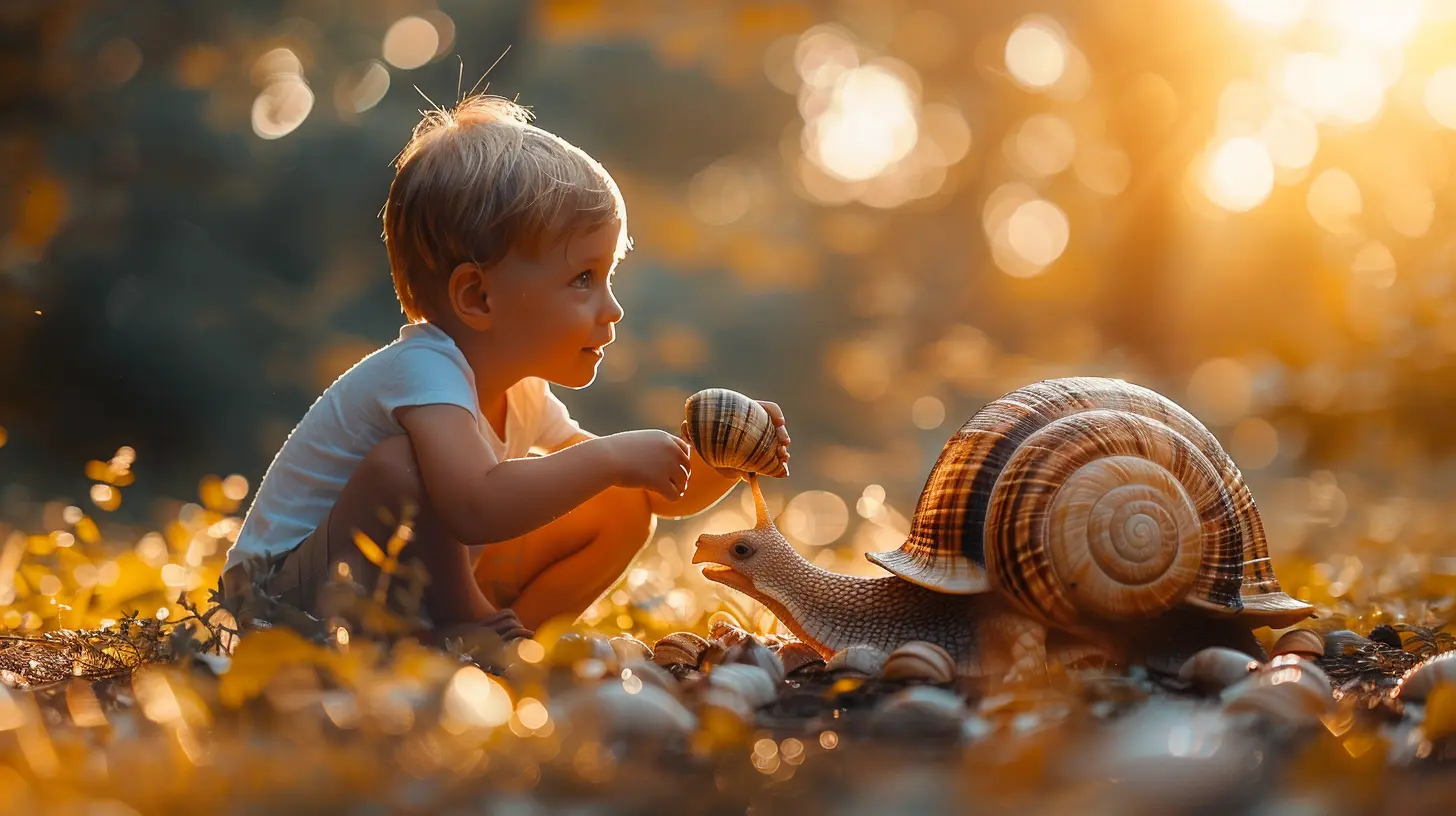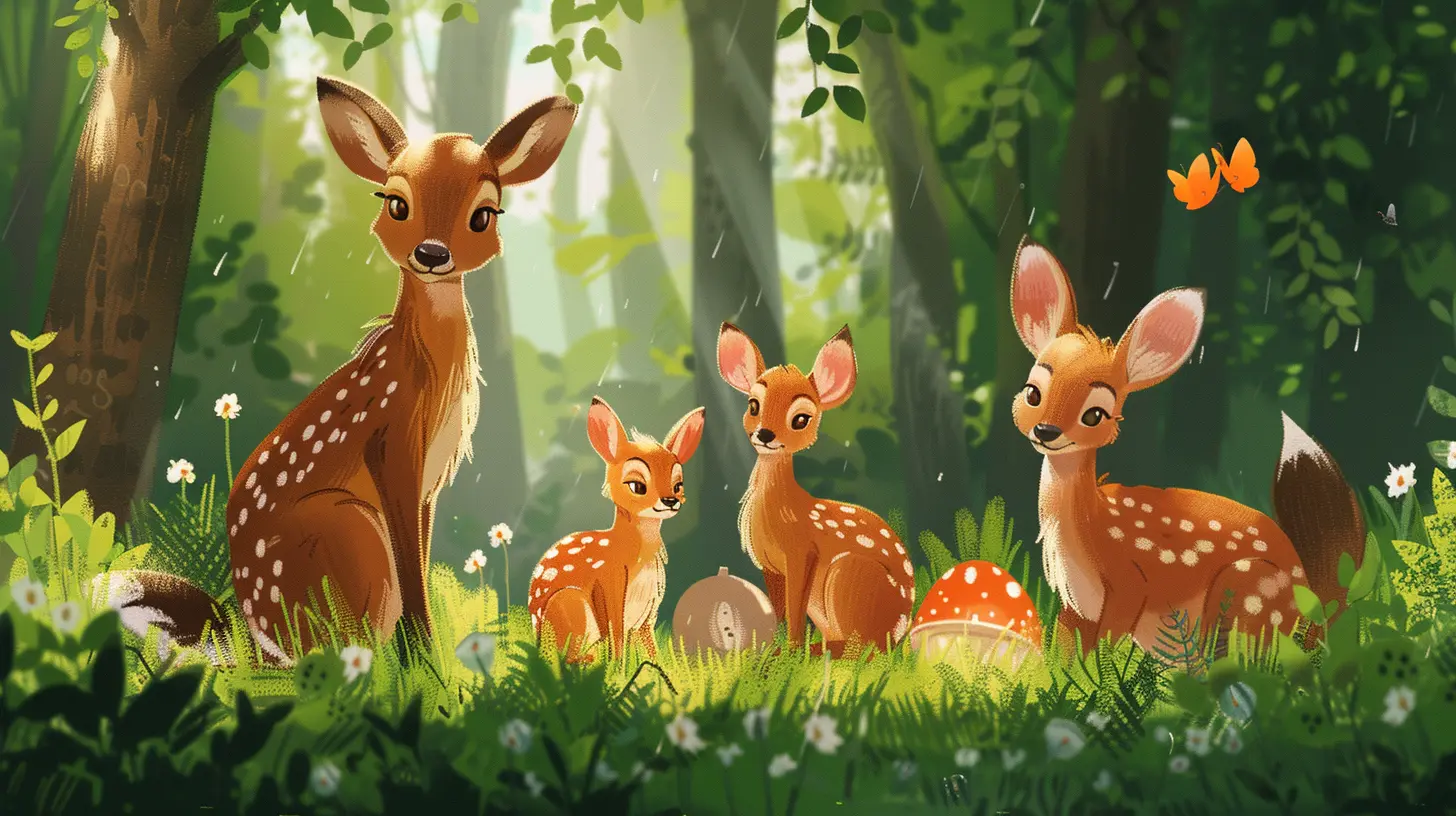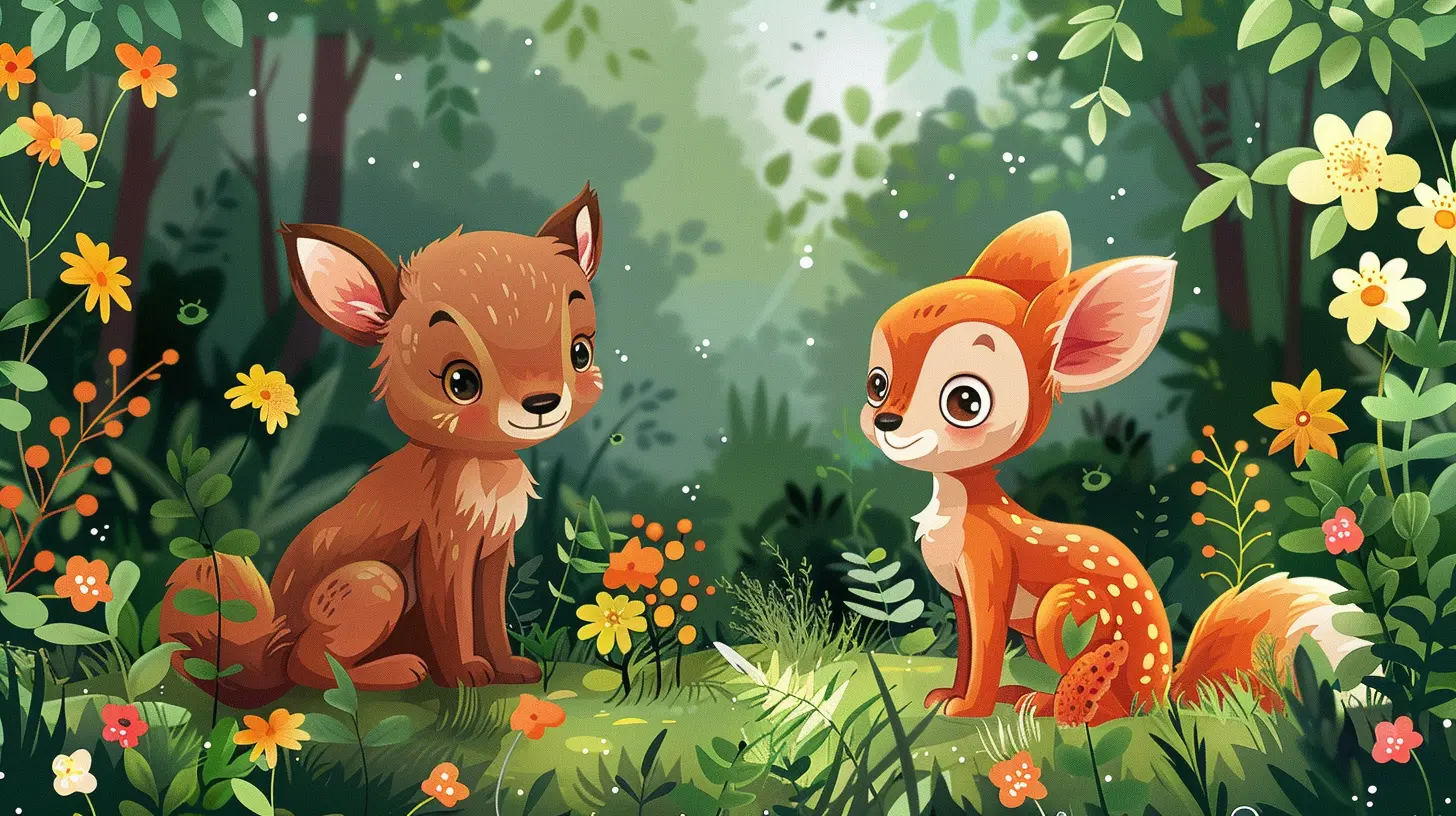Fun and Safe Ways to Teach Kids About Wildlife
4 September 2025
Let’s face it — kids are naturally curious creatures. They’re born explorers with endless questions, and wildlife? Well, that’s like a treasure chest of mystery and excitement for them. Birds that sing, bugs that glow, animals that roar — what's not to love?
But as fun as wildlife can be, it’s equally important to help our little ones understand it safely and responsibly. Whether you’re a parent, guardian, or teacher, introducing kids to the wild side of life can be one of the most rewarding experiences — for them and for you.
So, how do we bring the jungle to the backyard (minus the danger)? Let’s dig into some fun and safe ways to teach kids about wildlife without needing a passport or a safari hat.
Why Teaching Kids About Wildlife Matters
Before we get into the “how,” let’s talk about the “why.” Nowadays, kids are spending more time indoors glued to screens. Nature feels like a background wallpaper instead of a real-life experience. Teaching children about wildlife helps:- Develop empathy and compassion for other living beings
- Encourage a lifelong love of nature and conservation
- Build basic science and observation skills
- Reduce fear or misconceptions about wild animals
- Disconnect from screens and reconnect with the real world
Plus, let’s be honest — watching a butterfly land on your kid’s finger is pure magic.
Tip #1: Start in Your Own Backyard
You don’t need to travel to a faraway jungle to experience wildlife — some of the most fascinating critters live right under our noses.What to Do:
- Set up a bird feeder and let your child track which birds stop by.- Create a bug hotel using sticks, pinecones, and leaves.
- Plant butterfly-attracting flowers like milkweed and lavender.
- Set out a shallow water dish for squirrels or birds (don’t forget to clean it regularly!)
Why It Works:
Kids feel a sense of ownership when they help create a wildlife-friendly space. Plus, observing animals in their natural habitat teaches patience and mindfulness. It’s like bringing a zoo to your garden — minus the entrance fee.
Tip #2: Go on Nature Walks
Walking in nature is one of the simplest — yet richest — ways to teach kids about wildlife. Turn an ordinary walk into an adventure!Nature Walk Activities:
- Scavenger hunt: Make a checklist of things to find — a pinecone, feather, ladybug.- Take a “sound safari” — close your eyes for a minute and list every natural sound you hear.
- Track prints in the mud and try to guess which animal made them.
Safety First:
Teach your kids the golden rule: Look but don’t touch. Remind them to respect animal homes, avoid touching unknown insects, and stay on trails.
Tip #3: Visit Wildlife Sanctuaries and Nature Reserves
Sanctuaries are like VIP lounges for animals — safe, protected spaces where wildlife can thrive. Visiting one can be both fun and eye-opening for kids.What They'll Learn:
- How injured or endangered animals are cared for- Importance of conservation work
- Real-life stories of rescued animals — which kids totally eat up!
Many centers offer hands-on exhibits, guided tours, and even “junior ranger” programs where children can earn badges for completing activities.
Parenting Tip:
Before you go, read a bit about the animals you might see. That way, your kid can match the real-life animal with their story — it adds a whole new level of “wow!”Tip #4: Books, Games, and Apps (Yes, Some Screen Time Is OK!)
Not all screen time is the enemy. When used the right way, it can actually support what kids are learning about wildlife.Suggestions:
- Books: Classics like The Gruffalo or Stellaluna mix storytelling with animal facts.- Apps: Try Seek by iNaturalist to identify plants, bugs, and animals in real-time.
- Educational games: Sites like National Geographic Kids offer interactive fun.
Just be sure to balance digital activities with real-world exploration.
Tip #5: Get Crafty with Wildlife-Inspired Art
Let your kids’ creativity run wild — literally! Art is a great way to reinforce what children learn about animals.Fun Craft Ideas:
- Animal masks using paper plates and string- Footprint painting to simulate animal tracks
- DIY animal puppets for storytelling
- Rock painting to make colorful bugs or reptiles
Art doesn’t have to be perfect — it just has to be fun. Bonus? It helps kids remember animal features, colors, and behaviors.
Tip #6: Backyard Camping — With a Wildlife Twist
Turn your backyard into a wilderness escape! You don’t need massive gear, just some imagination.What You’ll Need:
- Sleeping bags or a tent- Flashlights or glow sticks
- Nature-themed bedtime stories
- Animal call challenge (try to mimic owl hoots or frog ribbits)
You can even toast marshmallows while learning about nocturnal animals. It's like an outdoor classroom — but with s’mores.
Tip #7: Get Involved in Local Conservation Efforts
What better way to show kids the importance of wildlife than by doing something about it?How to Participate:
- Join local clean-up days at parks or beaches- Volunteer at animal shelters or wildlife centers
- Participate in citizen science projects like the Great Backyard Bird Count
These activities show kids that change starts with small steps — and that they’re capable of making a difference, even at a young age.
Tip #8: Use Role Play and Pretend Play
Kids love pretending to be lions, monkeys, or roaring dinosaurs. Why not turn that play into a learning opportunity?Ideas for Role Play:
- Set up a “wildlife rescue center” at home with stuffed animals- Pretend to be wildlife explorers documenting new animal species
- Play "zookeeper" and assign each stuffed animal a care plan
Imaginative play helps kids retain information while having a blast. Plus, it opens up conversations about animal needs, habitats, and behavior.
Tip #9: Watch Documentaries Together
Got a rainy day? Perfect. Settle in with a cozy blanket and a family-friendly wildlife documentary.Top Picks:
- Our Planet (Netflix) – visually stunning and educational- Born in China (DisneyNature) – follows panda, monkey, and snow leopard families
- Wild Kratts – great for younger kids who love cartoons and animals
Make it interactive by pausing to ask questions or discuss what they found surprising. Bonus points for popcorn shaped like animal paws!
Tip #10: Foster Respect, Not Fear
It’s easy for kids to get the wrong idea about certain animals (hello, spiders and snakes!). But teaching respect over fear is key.How to Do It:
- Explain the roles animals play in ecosystems (yes, even the “scary” ones!)- Correct myths gently — “Bats aren’t blind, they actually see really well!”
- Set an example by staying calm when encountering wildlife
Remind your child that every creature has a job — just like people. Even that weird-looking beetle in the garden is doing important work.
Final Thoughts: Wild Hearts Start Young
Teaching kids about wildlife doesn’t require fancy trips or expensive gadgets. It’s all about curiosity, conversation, and connection. The earlier we spark that love for the outdoors, the more likely our kids will grow up to protect it.So, grab a magnifying glass, pull on your explorer hat (real or imaginary), and get ready to make some fuzzy, feathery, and scaly new friends. Because when it comes to wildlife, every day can be an adventure — and you don’t even have to leave your neighborhood.
Let nature be your child’s greatest teacher — and you, their favorite guide.
all images in this post were generated using AI tools
Category:
Outdoor ActivitiesAuthor:

Zelda Gill
Discussion
rate this article
1 comments
Sophia Smith
This article offers fantastic insights into engaging kids with wildlife education while ensuring their safety. Activities like nature scavenger hunts and guided wildlife tours foster curiosity and respect for nature. Incorporating hands-on learning experiences can significantly enhance kids' understanding and appreciation of the natural world. Great resource!
September 7, 2025 at 2:20 PM

Zelda Gill
Thank you for your thoughtful feedback! I'm glad you found the activities engaging and valuable for fostering a love of nature in kids.


